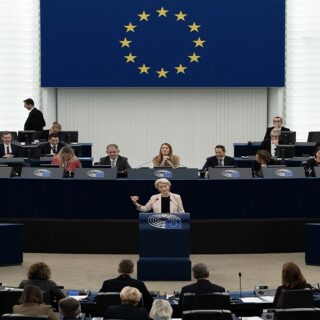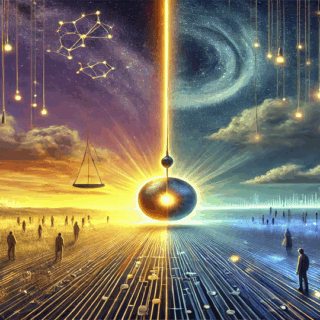
The Russian Revolution of 1905-1907 was the first major European revolution with a terrorist component.
Politically-motivated killings happened on a large scale in previous European revolutions, especially in the French Revolution of 1789-1804 and the European revolutions of 1848-1849. However, in the Revolution of 1905-1907, we are talking about terrorist acts conducted by organized groups.
The massiveness and continuity of terrorism in the first decade of the 20th century forced all political parties and movements in the Russian Empire to determine their relationship to terrorism as a means of political struggle. The attitudes of the parties and movements toward terrorism also determined their approaches to the government’s attempts to crush terrorism.
Many members of both the government and political movements came to see terrorism as a useful means of advancing and obtaining their political goals. Not surprisingly, terrorism became self-perpetuating and could continue even after mass protest movements ended and despite government repressions.
The relevance of terrorism in the Revolution of 1905-1907 cannot be over-emphasized especially with today’s outbreaks of terrorism, government wars against terrorism, and attitudes of political parties and movements toward terrorism as a means of political struggle.
However, we must always be aware that terrorism happens in specific countries and regions and in different historical periods under specific historical conditions often unique to the country, region, or period.
Terrorism in the Revolution of 1905-1907 had certain unique features. Most importantly, terrorism helped turn the revolution into a civil war.
The Revolution as a Civil War
Terrorism was only one of several types of mass violence in the revolution. The other types included: the violence of mass protest movements, criminal violence, and government violence in suppressing the revolution. Although terrorist leaders repeatedly stated that they would only practice terrorism in combination with the violence of mass protest movements, the two types of violence usually did not coincide.
The different types of violence and conflicts turned the Revolution of 1905-1907 into a civil war. The Oxford Dictionary of the English Language defines a civil war as a war between citizens or residents of a separate country, state or society. [1] One cannot restrict civil wars to conflicts between armies. Furthermore, one can place the Revolution of 1905-1907 in a bigger European context.
American historian Stanley Payne suggested that the revolution was the start of a European civil war between 1905-1949. Payne noted that usually the concept of the European civil war is applied just to World Wars One and Two or to the conflict between Nazism and Communism. The American historian suggested that civil wars include most revolutions, continual peasant uprisings, revolutionary or ethnic rebel movements, anticolonial uprisings, wars of resistance against foreign occupiers. Payne described the Revolution of 905-1907 as the culmination of numerous conflicts that began after the abolition of serfdom in 1861. [2, pp. 1-3, 16-17]
Civil wars in revolutions include not only armed conflicts, but also unarmed conflicts, especially ideological ones. Ideological wars can divide a society right down to the level of the family along political lines.
The Revolution of 1905-1907 included conflicts not only between the government and different strata of the population, but also between different strata and within them. There were conflicts on political, social (estates and classes), ethnic, religious, regional, local, age, gender, and other lines. The revolution gave birth to numerous revolutionary, antirevolutionary, and counter-revolutionary movements. Just like in the French Revolution and in the revolutions of 1848-1849, especially in the Austrian Empire, revolutionary, antirevolutionary, and counter-revolutionary movements suggested to their followers that violence was a legitimate form of political struggle. [3, c. 47] The disintegration of Russian society took place on an even bigger scale in the Revolution of 1917-1922.
The intensity of conflicts in the Revolution of 1905-1907 was the long-term result of many conflicts dating back to the abolition of serfdom in 1861. The abolition of serfdom broke apart the foundations of the old political-social order and initiated the beginning of Russia’s transition from the feudal order to the industrial age. Most notable was the conflict between the government and educated society, as represented by the political parties and movements. [3, c. 49]
Civil War between the Government and Society
One manifestation of the strained relationships between the government and society was the emergence of many political parties. Russian historian V. V. Krivenkii calculated the number of parties in the country. Between the 1890s and 1920s, there were about 300 all-Russian or empire-wide (общероссийские, общеимперские) and ethnic (национальные) parties. Before 1905, there were 4 empire-wide and 47 ethnic parties. This number grew to 45 empire-wide and 113 ethnic parties by February 1917. [4, c. 123-130] These calculations do not include anarchist groups of all tendencies and many marginal rightist and leftist groups that did not have any party affiliation.
Although party leaders often emphasized that they represented the interests of distinct classes, this did not correspond to the realities of prerevolutionary Russia. The editors of one post-Soviet encyclopedia on political parties emphasized that there were not and could not be any purely class parties even if the party proclaimed that it represented a particular class or stratum. As the editors noted <<a characteristic feature of the Russian multi-party system was the fact that its creator and main actor was the intelligentsia.
Therefore, one can consider both empire-wide and ethnic parties as organizations of an intelligentsia type. [5, c. 6] The intelligentsia was the politically conscious sector of educated society. Peasants and workers could belong to political parties and movements, but these organizations were always led by the intelligentsia.
Terrorism was one major weapon in the civil war between the government and intelligentsia. In fact, terrorism was the derivative of the strained and tense relationship between the two sides. The next article will explore the extent of political terrorism and describe which parties practiced terrorism and which parties supported or opposed it.
Citations
1. Oxford English Dictionary. Third Edition. 2011. Electronic Version.
2. Payne, Stanley G. Civil war in Europe, 1905-1949. New York: Cambridge University Press, 2011.
3. Рокки, Т. Российская революция 1905-1917 гг. как первая гражданская война в Европе в ХХ веке. (Rocchi, T. The Russian Revolution of 1905-1907 as the first civil war in Europe in the 20th century). История. Историки. Источники. 2022, № 4, сс. 46-55. https://s.esrae.ru/history2014/pdf/2022/4/362.pdf
4. Кривенький, В. В. Новые данные сравнительно-количественного анализа политических партий России. (New data of a comparative-numerical analysis of political parties of Russia). История национальных политических партий в России. Материалы международной конференции. Москва. 21-22 мая 1996. Москва: РОССПЭН, 1997, сс. 123-130.
5. Предисловие. Политические партии России, конец XIX – первая треть ХХ века: энциклопедия. (Political parties of Russia from the end of the 19th century to the first third of the 20th century) Москва: РОССПЕН, 1996. https://rabkrin.org/politicheskie-partii-rossii-konecz-xix-pervaya-tret-xx-veka-encziklopediya-1996-kniga/





